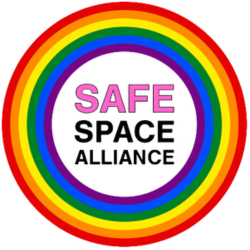By: Maria Miller, LPC
The tornado that tore through St. Louis Friday afternoon damaged more than buildings and trees—it disrupted our collective sense of safety and normalcy. As a community, we’re grieving losses that extend beyond personal property: the familiar route to work now unrecognizable, the neighborhood park where generations gathered now stripped of its beauty, the local businesses that served as gathering spaces now temporarily closed. These shared landmarks held our collective memories and provided the backdrop for our community identity. When we drive past or see images of damaged schools, houses, parks, and historic buildings, we’re experiencing a form of ambiguous loss—the places still exist but are fundamentally altered. This shared grief can feel particularly disorienting because it affects both our individual sense of stability and our collective understanding of “home.”
The Healing Power of Community Acknowledgment
Collective grief requires collective healing rituals. While individual therapy remains valuable, community-based approaches offer unique benefits after widespread disaster. When we gather to share stories, hold commemorative events, or participate in rebuilding efforts, we validate each other’s experiences and create new bonds through shared recovery. Community acknowledgment helps normalize the complex emotions many are experiencing—from sadness and anger to unexpected guilt about being spared the worst damage. Research shows that societies with strong communal mourning practices often demonstrate greater resilience after disasters.
From Collective Trauma to Collective Resilience
As we move forward, our community has an opportunity to transform collective grief into collective resilience. This doesn’t mean rushing to “get over” our losses or forcing premature closure. Rather, it involves weaving our shared experience of the tornado into our community’s ongoing story in meaningful ways. Some communities have created memorial gardens in damaged areas, established annual remembrance events, or developed disaster preparation programs that honor past experiences while building future security. These approaches acknowledge that major disasters permanently change a community while creating space for new growth. The path from collective trauma to collective resilience isn’t linear, and different community members will move at different paces. By holding space for diverse reactions—from those ready to rebuild to those still processing shock—we create a more inclusive recovery that leaves no one behind in their healing journey.
If your mental health has been impacted by the recent storms, please know that we are here to help. We have several providers with immediate availability who accept a variety of insurance plans. Our dedicated intake team would be happy to speak with you about finding the best fit for you. Simply fill in the contact form by clicking here, and we will be in touch.


